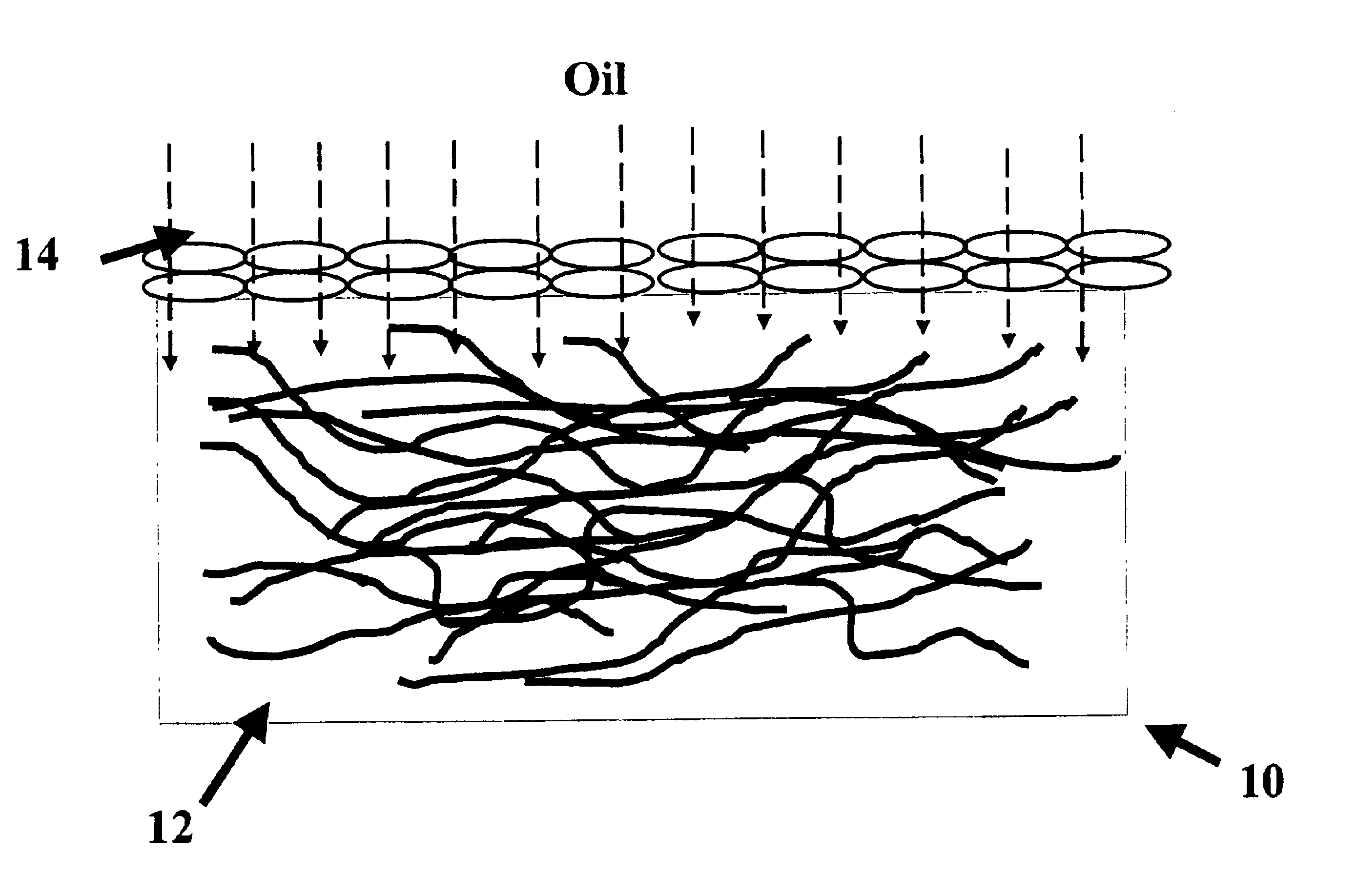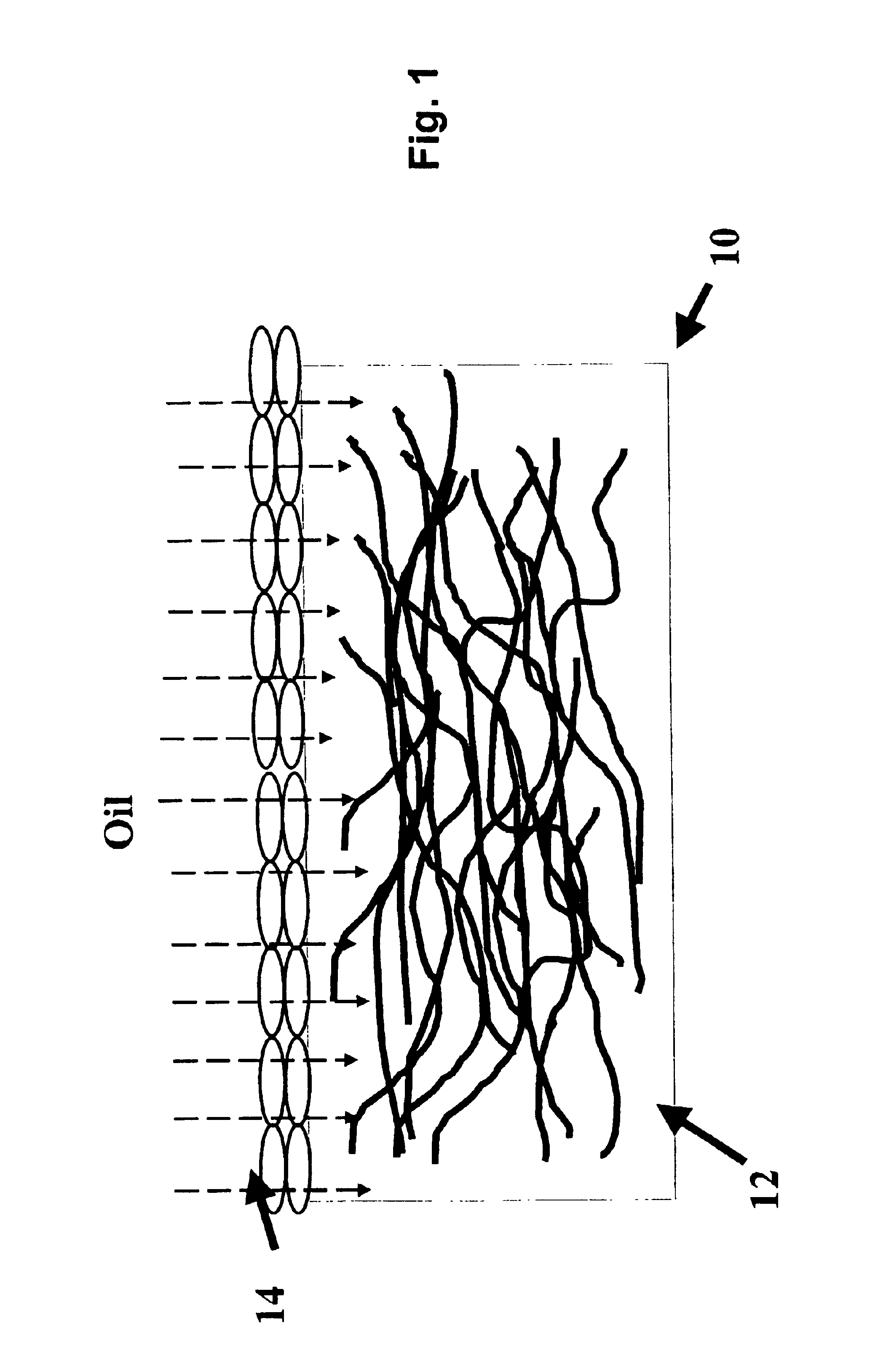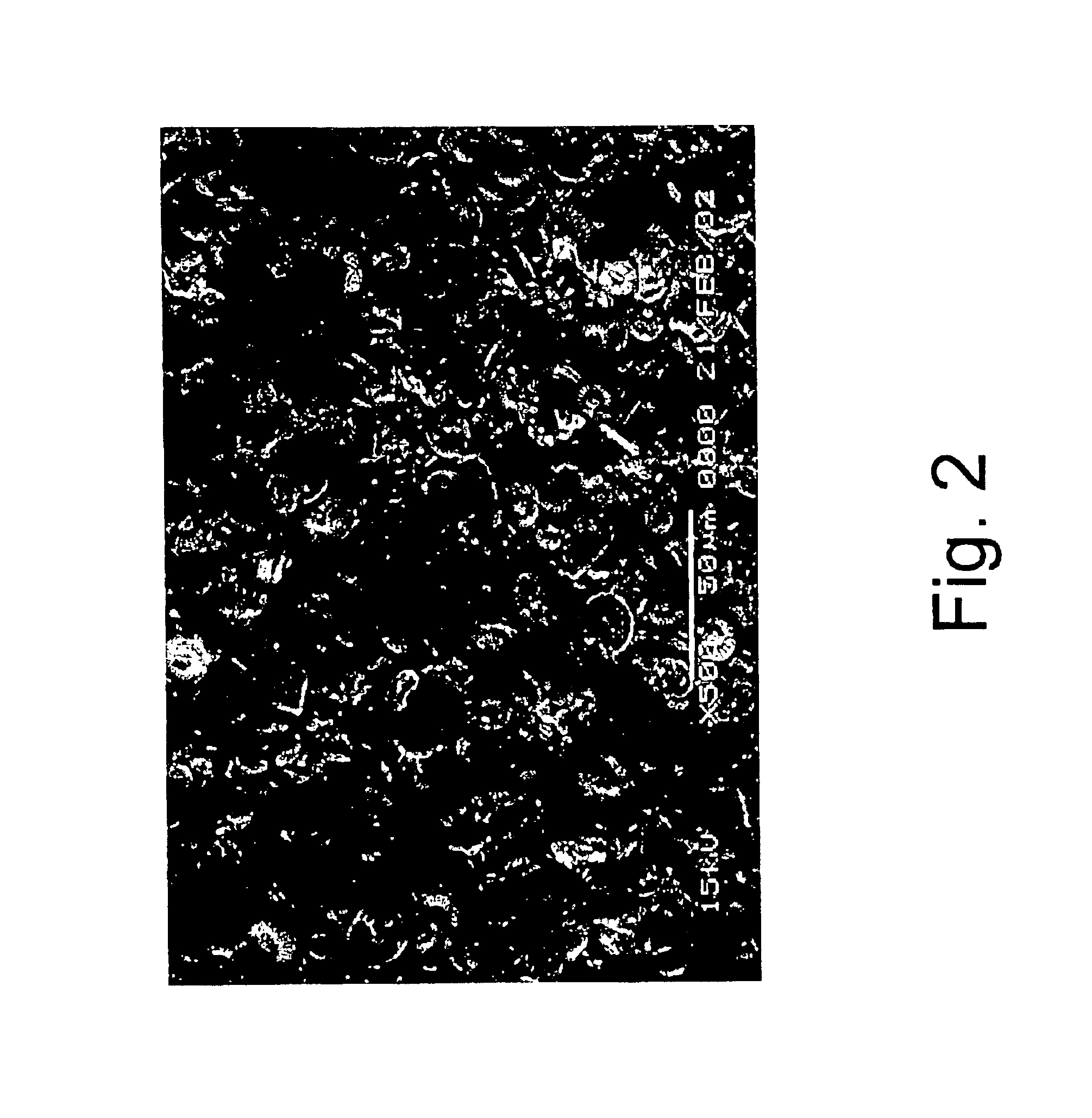Friction material with friction modifying layer having symmetrical geometric shapes
a friction material and geometric shape technology, applied in the field of fiction materials, can solve the problems of high energy requirements, asbestos no longer being used, and the inability to rapidly dissipate the high heat generated
- Summary
- Abstract
- Description
- Claims
- Application Information
AI Technical Summary
Benefits of technology
Problems solved by technology
Method used
Image
Examples
example i
A slip durability test was conducted. FIG. 3 shows the slope versus slipping time for Ex. 1; Compar A. which contains about 20 to about 40% celite and about 1 to 10%, based on the basis weight of the paper, of celite as a top, or secondary layer; and Compar. C which comprises a single layer material of about 40 to about 60% celite and 40 to about 60% organic fibers. In contrast, the Ex. 1 of the present invention has a more effective deposit of the friction modifying particles on the surface of the base material. Only a negligible amount of the friction modifying particles on the top surface of the Ex. 1 friction material penetrate in the base, or primary, layer. The symmetrical shaped friction modifying particles stack or pile up on the base material to form a good layer of a “mountain and valley” type of three-dimensional structure. This three-dimensional structure creates positive friction behavior for the friction material of the present invention, including good oil flow or lub...
example ii
FIGS. 4a and 4b show the results of an “E” clutch bench test were conducted for Compar. A and Ex. 1 for low oil flow. Both examples have improved anti-shudder characteristics and that both are improved materials with non-squawk.
FIGS. 4a and 4b show ascending or rooster tailed torque curve for the Compar. C versus a descending torque curves for the Ex. 1. The Compar. C curves have negative μ-v slope in the whole speed range while the Ex. 1 curves have positive μ-v slopes in the whole speed range. The positive μ-v slopes are preferred and necessary for a smooth clutch operation (engagement or slipping).
The condition shown in FIG. 4 is very special for a shifting clutch. This clutch connects to a long shaft and operates in a low lubrication situation. The operating condition is severe (high energy, low lubrication engagement) and is sensitive to vibration (due to the long shaft connection). Any ascending torque curve for this clutch results in noise (squawk) and vibration, such as show...
example iii and example iv
The FIGS. 5a-5b show the thickness of the deposit layer as being about 80 μm. The distinct layer of the deposit particles is also shown. For 80 μm per layer cut, the front and back view of the top layer show yellow / brown color, that is exactly the deposit layer color. The front view of the second layer in this FIGS. (5a-5b) reveals the green color of the base material. By combining the top and second layer images in the front and back view, it is clearly shown that the deposit layer thickness is about 80 μm (the thickness of the cut).
In FIGS. 6a-6b, the top layer shows yellow / brown color (which is always the case since this is the friction surface composed of Celite particles and resin), while the back view shows green color (this is the color of the base material). The different color on front view and back view shows that the 1001 μm (per layer cut) is more than the thickness of the deposit layer.
These two sets of FIGS. (5a-b and 6a-b) demonstrate the deposit layer thickness to be...
PUM
| Property | Measurement | Unit |
|---|---|---|
| thickness | aaaaa | aaaaa |
| thickness | aaaaa | aaaaa |
| average diameter size | aaaaa | aaaaa |
Abstract
Description
Claims
Application Information
 Login to View More
Login to View More - R&D
- Intellectual Property
- Life Sciences
- Materials
- Tech Scout
- Unparalleled Data Quality
- Higher Quality Content
- 60% Fewer Hallucinations
Browse by: Latest US Patents, China's latest patents, Technical Efficacy Thesaurus, Application Domain, Technology Topic, Popular Technical Reports.
© 2025 PatSnap. All rights reserved.Legal|Privacy policy|Modern Slavery Act Transparency Statement|Sitemap|About US| Contact US: help@patsnap.com



